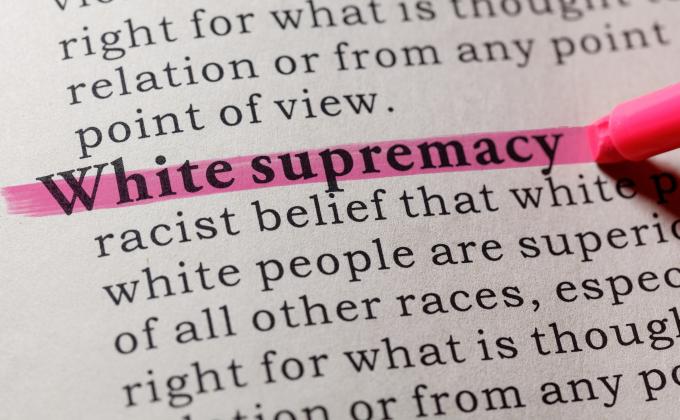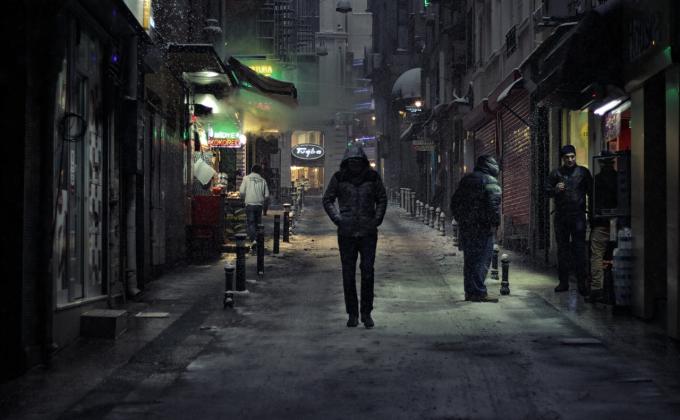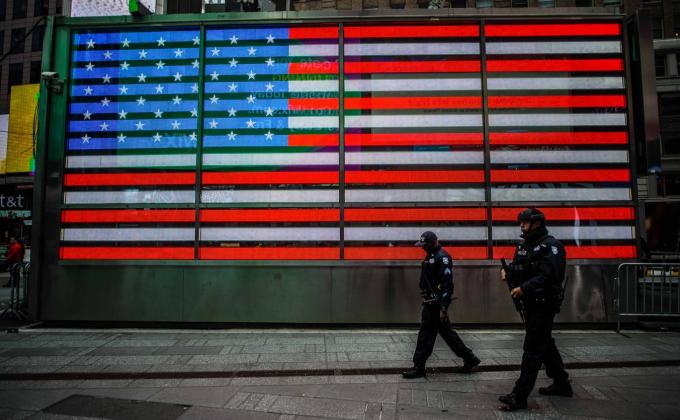Disclaimer: Primary sources, including quotations, are not linked within the text for ethical reasons. Readers interested in obtaining primary material may contact the authors directly.
“Eco-fascism” is receiving renewed attention following the recent far-right terrorist attack at a supermarket in Buffalo, New York. In his manifesto, the perpetrator hailed as an inspiration the 2019 Christchurch attacker, himself a self-declared “eco-fascist,’’ and plagiarised his manifesto’s section on environmentalism which described immigration as “environmental warfare” and ‘’destructive to nature.’’ Notably, the Buffalo attacker also quoted Ted Kaczynski, otherwise known as the Unabomber, excerpting Kaczynski’s critiques of leftists from his 1995 anti-technology manifesto Industrial Society and its Future (he was not the first far-right terrorist to do so, Anders Breivik also plagiarised Kaczynski’s manifesto in 2011).
Kaczynski is a figure contemporary eco-fascists have coalesced around. Indeed he has been increasingly co-opted by the broader far-right in recent years. While most of what has been discussed about eco-fascism is centred on anti-immigration “green” nationalism or far-right neo-Malthusian arguments about overpopulation, less discussed is the salience of Kaczynski’s anti-modern and anti-technology ideas within eco-fascist communities.
Kaczynski advocated for overthrowing the industrial-technological system, not white supremacism. Highlighting then the appeal of Kaczynski within contemporary eco-fascist subcultures is crucial for understanding both the ideology of these lesser known far-right communities and threats that could emerge from them. Environmental issues are typically associated as a frequent grievance of left-wing movements, and eco-extremism with radical environmentalists such as the Earth Liberation Front. Effective horizon scanning must consider the ‘double-pronged’ ideological nature of eco-extremism, by accounting for the far-right and also considering how far-right violence associated with the environment and climate change may manifest.
This ICCT perspective will focus on the co-opting of Kaczynski’s ideology by self-styled eco-fascists, why he appeals to these communities, and what the implications could be for potential future eco-fascist threats. We use the term 'eco-fascism,' although it is contested, with some scholars proposing alternative labels such as 'neo-ecofascism,' 'right-wing ecologism' or 'far-right ecologism.'
What is eco-fascism?
Eco-fascism, as described by Alex Amend, is the "devaluing of human life—particularly of populations seen as inferior—in order to protect the environment viewed as essential to White identity.'' While the right traditionally tended to deny climate change, far-right environmentalists increasingly accept the science behind global warming, albeit filtered through their own ideological lens: they believe overpopulation in the Global South is causing the over-use of resources, increasing immigration to the West, and thereby furthering the environmental despoliation and degradation of “white” homelands. It is an idea which has been used to justify terrorist attacks in Christchurch, El Paso and Buffalo.
It should be stated that eco-fascism itself is a fringe phenomenon and has not significantly impacted mainstream or radical right politics. This is why the term far-right ecologism has been proposed as an alternative label, to prevent ‘eco-fascism,’ with its more narrow definition outlined above, from dominating our understanding of the broader radical right’s nature politics. That being said, a distinct eco-fascist subculture does exist on platforms such as Telegram, often inhabiting the same online ecosystems and networks as other violent far-right extremists, including from the so-called “skull mask” network. Subsequently, the glorification of terrorism and calls for violent action from these communities warrants our attention.
One group to have emerged from this milieu is the short-lived ‘Green Brigade’ describing themselves as ''accelerationist eco-extremists,'' the group acted as the eco-fascist wing for the neo-Nazi ‘The Base,’ and were responsible for an arson attack against a Swedish mink farm in 2020. While now disbanded and only ever small in number, the desire for violence from groups such as these creates a significant threat. Furthermore, while various eco-fascist groups and networks have come and gone over the last few years, eco-fascism still remains a resilient subculture, which continues to attract the most radical adherents of far-right nature politics.
Kaczynski’s rejection of eco-fascism
It is first necessary to provide a brief background on Kaczynski and an overview of his appeal to eco-fascist subcultures. Today, eco-fascists are active on Twitter and Telegram. Many embrace the ideas of neo-Malthusian thinkers like Pentti Linkola (1932-2020), the late Finnish deep ecologist. Deep ecology is an environmental philosophy regarding human life as of equal value to all other living things on earth, and advocates for a radical readjusting of humanity’s relationship with nature. Linkola promoted extreme population control measures, including mass murder, as a solution to the climate crisis. Yet the figure who is featured much more prominently than Linkola within the visual culture of eco-fascist communities, is Ted Kaczynski.
Theodore John Kaczynski was responsible for a seventeen year-long bombing spree in the US until his arrest in 1996, killing three people and injuring twenty-three others. He conducted his bombing campaign from his remote one room cabin in rural Montana, US, using mail or hand-delivered homemade devices to target those he believed were promoting technology at the expense of what he called “wild nature.” His victims included computer scientists, as well as aviation and industry leaders. In 1995, the New York Times and The Washington Post gave in to Kaczynski’s demand to publish “Industrial Society and Its Future,” which became known as the “Unabomber Manifesto,” espousing anti-technology and pro-environmental views. Following a tip off from his brother, he was arrested and sentenced to life in prison without the possibility of parole in 1998. During his incarceration he has produced further writings, including Technological Slavery (2010) and Anti-Tech Revolution: Why and How (2016). In 2021, he was transferred to a secure federal medical centre in North Carolina on the grounds of ill health.
Writing from prison, Kaczynski has rejected the eco-fascist appropriation of his ideas, declaring himself an “adversary” of eco-fascists and accusing them of selective reading of his writings. He argued their vision was at odds with his belief society should never be subject to “rational human guidance” and lacked commitment to the total rejection of technology. Kaczynski also rejected their racism and ethnocentrism, instead encouraging racial and cultural blending, albeit as a necessary matter of revolutionary strategy.
Moreover, he has dismissed Nazism as a “kook ideology” and wrote that Hitler’s “lust for personal power and self-glorification” had “appropriated the potentially revolutionary forces” within German society which he believed contained an “anti-civilization current.” Yet despite Kaczynski not acting on behalf of far-right ideology, his outright rejection of eco-fascism and disparaging remarks against Nazi Germany, he has continued to be absorbed as an icon by eco-fascist communities.
Why Kaczynski appeals to eco-fascists
Kaczynski continues to appeal to eco-fascists for both ideological and symbolic reasons. Firstly, the anti-modernism inherent in Kaczynski’s anti-technological diatribes resonate deeply within eco-fascist subcultures, who reject modern civilization and promote an idyllic return to nature and a neo-völkisch romanticisation of rural traditions (p.6). Kaczynski’s call to protect and restore what he termed as “wild nature” (i.e. nature which is independent of human management, interference and control) has been easily appropriated by eco-fascists to suit their own agenda. Eco-fascists regard nature itself as inherently fascist, and so view abolishing the techno-industrial system as a way of reverting back to an imagined natural order and hierarchy.
Secondly, Kaczynski is also respected as a symbol of resistance against the degeneracy of modern society and revered as a role model who sets a ‘cabin-in-the-woods’ standard of breaking away from civilization, returning to the wilderness and adopting a militant stand against the modern world. The glorification of his bombing campaign is prevalent across eco-fascist Telegram. For one user - who praises Kaczynski’s “means” alongside a ‘bomb’ and ‘mailbox’ emoji - it is his violent actions that resonate as much as his “prophetic words” and “revolutionary message.”
Other reasons Kaczynski’s ideas have been so readily embraced by eco-fascists are related to his intellectual resonance with far-right traditions. Anti-modernity is a key component of fascist ideology and his manifesto is regarded by one author as “possibly the most extensive antimodern terrorist treatise ever written.”
Similarly, his attacks on “leftism” also find a willing readership on the far-right, and are easily absorbed or grafted onto pre-existing ideological frameworks with much of his polemic against the left reading “like a parody of right-wing prejudices” (pp.57-58). In his manifesto, Kaczynski berated “the psychology of modern leftism,” regarding leftists as driven by “feelings of inferiority” and “oversocialization,” and warned of the “dangers of leftism,” stating any movement which “exalts nature and opposes technology must take a resolutely anti-leftist stance.” This view of leftism as inconsistent with wild nature is mirrored by the eco-fascists belief they must seize stewardship of the environment from the left, as illustrated by a passage of the Christchurch attacker’s manifesto, (also plagiarised by the Buffalo shooter):
“For too long we have allowed the left to co-opt the environmentalist movement to serve their own needs. The left has controlled all discussion regarding environmental preservation whilst simultaneously presiding over the continued destruction of the natural environment.”
Despite not adhering to a far-right ideology himself, Kaczynski’s appeal to eco-fascists can be attributed to several ideological overlaps with the far-right, such as the anti-modernism inherent in his anti-technology views and his critiques of leftists, which have been praised across the broader far-right for their perceived prescience. Symbolically, Kaczynski’s example of returning to the wild and struggling against the system through militancy, also garners the respect of eco-fascists.
Siege and eco-fascist subcultures
Eco-fascists have emerged within 'Siege-culture,' a violent white supremacist subculture in which Kaczynski is also widely admired. Adherents view Kaczynski as a kindred spirit for accelerationist violence for his overall strategy of creating a systemic collapse and see in his ideology a potential template for effective target selection.
Siege-culture is named after neo-Nazi James Mason's book 'Siege,' which advocates for any action violent or otherwise that will destroy “the system.” Such ideas subsequently became known as “accelerationism” which is defined by Matthew Kriner as “a set of tactics and strategies designed to put pressure on and exacerbate latent social divisions, often through violence, thus hastening societal collapse.” Similar strategic thinking has been expressed by Kaczynski: “what has to be done is not try to persuade the majority of people that we’re right, so much as to try to increase tensions in society to the point where things start to break down, when people get uncomfortable enough so that they’re going to rebel.”
The co-opting of Kaczynski provides eco-fascists with a “green accelerationist” pathway as the use of violent tactics to increase tensions can easily be applied to his ideas, elevating him as “an obvious sage of violence.” Far-right accelerationism is aimed at collapsing and dismantling liberal democracies as a necessary step towards establishing a white ethno-state. Kaczynski calls for the total collapse of the techno-industrial system. Both ideas are united by the belief that the political and economic systems which sustain everyday life need to come crashing down before any meaningful changes can take place.
Networks linked to Siege-culture have included Atomwaffen Division, The Base and Sonnenkrieg Division, and are connected to several killings and numerous prosecutions, including conspiracies to commit attacks. Some activists within this milieu have even sought to establish direct communication with Kaczynski, writing letters to him in prison. Across the “Terrorgram” community on Telegram, which provided a digital home to Siege-culture following the removal of neo-Nazi forums Iron March and Fascist Forge, Kaczynski’s writings are frequently referenced and he is venerated as one of their 'holy trinity' alongside Oklahoma City bomber Timothy McVeigh and Norway far-right terrorist Anders Breivik.
Siege-culture memes and propaganda featuring Kaczynski range from edited images of him calling for violence, or in the style of Siege-culture aesthetics popularised by Dark Foreigner, (one of the milieus most prolific graphic artists) to being depicted in quasi-religious terms as a “saint.” This is part of a wider trend within far-right digital subcultures, which have granted a form of honorary sainthood to a plethora of far-right terrorists, including the Charleston, Pittsburgh, Christchurch, El Paso and Buffalo shooters.
Images and propaganda of Kaczynski in this style are most concentrated across the eco-fascist 'Ecogram' community on Telegram, while accounts promoting eco-fascism also share content celebrating Kaczynski's actions on other platforms such as TikTok. Imagery on the eco-fascist Green Brigade’s Telegram channel blends Kaczynski's image with Siege-culture ‘skull-mask’ aesthetic, in what Michael Loadenthal has referred to as the ''Siege-ification of the deep green,'' or ''the Kaczynski-ization of the neo-Nazi.'' Other examples of eco-fascist propaganda refer explicitly to his works, including a figure masked by a ‘Totenkopf’ symbol and ‘Algiz’ rune holding up a copy of Industrial Society and It's Future, or masked armed figures holding Kaczynski's 2016 Anti-Tech Revolution.
The salience of Kaczynskian ideology is further reflected in the literature read by eco-fascists. “Deep Ecology” reading lists circulated by such far-right groups on Telegram and other platforms regularly recommend Kaczynski’s works. Another figure prevalent within this milieu is Mike Mahoney, also known as Mike Ma, founder of the Pine Tree Party movement, whose accelerationist novel Harassment Architecture is popular among eco-fascists. Harassment Architecture voices hatred against modern civilization and outlines through sarcastic suggestions effective tactics for causing disorder and chaos, including taking out power substations and cell towers with explosives. His second novel, Gothic Violence, transmits similar themes, following a gang of jihadist surfers who take out the national power grid. The novel fantasises about establishing 'New Atlantis,' a breakaway state in Florida with a Kaczynskian spirit, adopting Amish-like principles, rejecting new-age tools, removing the entire electrical grid, and returning to nature and tribal primitivism. Mike Ma's official Pine Tree Party website features an extensive catalogue of Kaczynski's writings and prison letters, and items listed on his official merchandise outlet have included 'Kaczynski Electric' branded clothing.
Portrayals of Kaczynski across eco-fascist communities range from satirical memes, to photos of Kaczynski in his youth, sometimes glossed over in a ‘terrorwave’ aesthetic. Images are sometimes edited to reflect far-right visual culture, such as Kaczynski featuring a Sonnenrad halo alongside quotes from his writings on the justifications of violence, or standing beside his cabin with red laser eyes and the caption: “nature reigns supreme.” Further indication of his appropriation as a neo-Nazi symbol can be seen in the tradition of wishing Kaczynski a happy birthday across eco-fascist networks on Telegram. One user who wished the 80-year-old “Uncle Ted” a happy birthday in a recent post added “if you could get 8 more that would be perfect” (this is a reference to the number 88, a white supremacist numerical code for “Heil Hitler”).
Much of the content featuring Kaczynski either implicitly or directly intends to incite violence against targets ranging from the agricultural, science or tech industry to the critical infrastructure sustaining modern civilization. This latter point builds on a tradition of far-right actors discussing or planning attacks on electrical substations, which continues to be a reoccurring theme today, particularly among accelerationists. Posts across eco-fascist Telegram networks calling for attacks against the electrical grid or targets related to the technology industry illustrate the comfortable overlap for Kaczynskian anti-tech radicalism and targets favourable to far-right accelerationists, presenting a dangerous ideological cocktail that aims to incite violence and inspire acts of sabotage.
Conclusion
To date, much of the focus on eco-fascism has quite justifiably been on the neo-Malthusian justifications for mass murder used by the Christchurch and El Paso attackers. As Kiernan Christ observes, far-right terrorism has yet to result in significant acts of violence against overtly environmental targets: “Rather than attacking oil pipelines or hydroelectric dams, self-professed “ecofascists” like Tarrant attack the same kinds of people and places as non-environmentalist right-wing terrorists such as Dylann Roof or Robert Bowers.”
However, the co-option and adaptation of Ted Kaczynski's anti-tech ideas by neo-Nazi accelerationists and eco-fascist subcultures both highlights the complexities of far-right environmentalism and illuminates possible future strategies of far-right terrorist action. Kaczynski's anti-technology ideas are well suited to contemporary neo-Nazism associated with Siege-culture, offering a green accelerationist pathway towards an idyllic vision of the “back-to-the-land” utopia that occupies the eco-fascist imaginary. His legacy and ideology has the capacity to inspire far-right violence directed towards technology or the sabotage of critical infrastructure. In tandem, in co-opting Kaczynski, the eco-fascists are perhaps also attempting to appeal to those who may feel alienated by the modern world and the increasing domination of technology over their lives.
As outlined, despite contradictions between Kaczynski’s statements and far-right ideas, his anti-modernism and desire for freedom from technological society has parallels with sentiments with a long tradition of anti-modernism in far-right thought. His critiques of leftism and desire for a totalising “revolution” also resonate deeply across the far-right, bearing a striking resemblance to contemporary right-wing prejudices and accelerationist ideas. He has also more broadly become a cipher of far-right primitivist nature politics, acting as a symbol to transmit a desire to be closer to nature, removed from the shackles of capitalism and modern civilization.
While historically radical environmentalism and threats from eco-terrorism are often associated with left-wing groups and movements, the increasing salience of Kaczynski in far-right discourse highlights a growing organisational space for far-right mobilisation towards violent environmental or anti-technology action. When scanning the horizon for future terrorist threats, which will take place in a world increasingly impacted by climate change, it would be prudent for practitioners and policymakers to be aware of future eco-terrorism or ‘ecotage’ threats. These threats could be characterised by a ‘double-pronged’ ideological spectrum, made up not just of far-left movements, but also far-right accelerationists and eco-fascists who could be inspired by Kaczynskian anti-tech radicalism.
Source Image: FBI









